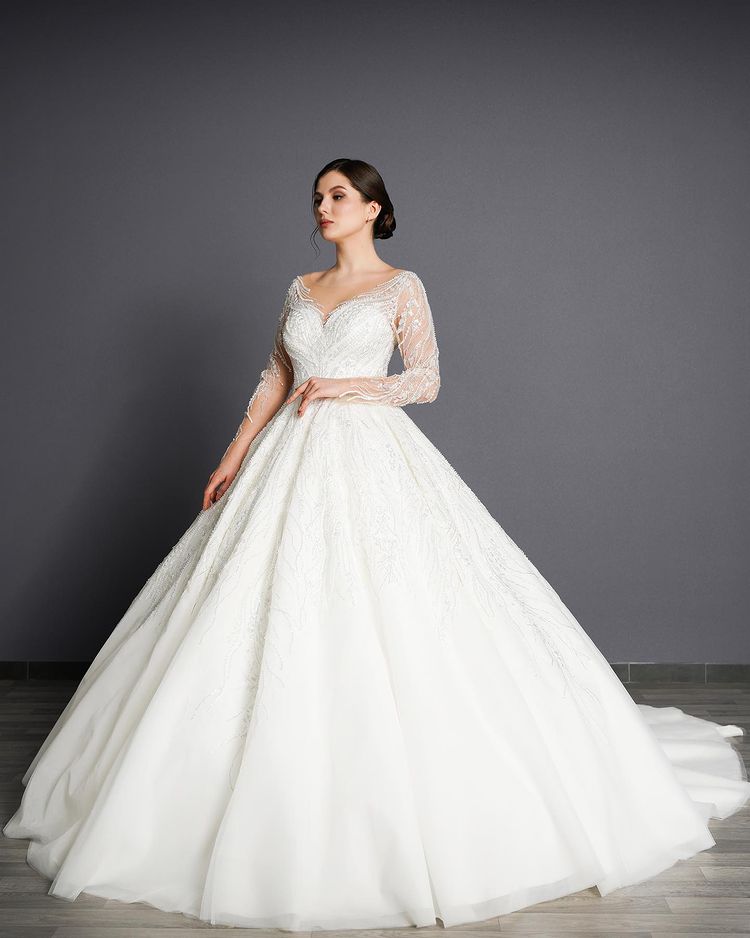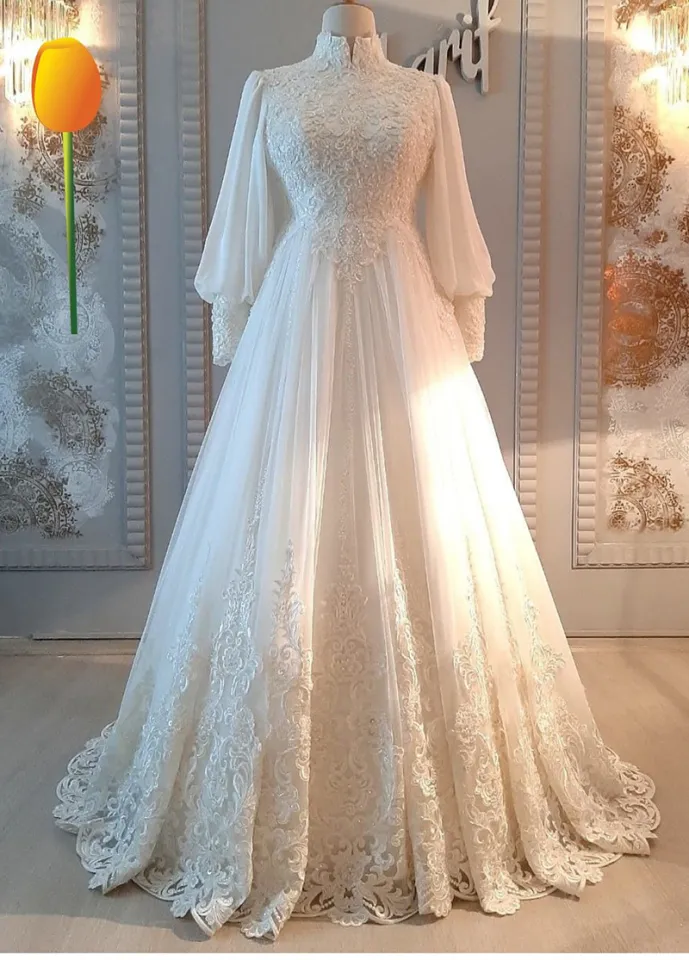I. Introduction

A. The significance of traditional weddings in the Islamic culture
Traditional weddings hold deep cultural and religious significance in the Islamic culture. These islamic wedding dresses are not only a celebration of love and the union of two individuals but also a reflection of cultural heritage and customs. They serve as a way to honor traditions passed down through generations and allow the couple and their families to showcase their cultural identity.
B. Embracing cultural heritage and customs in Islamic traditional weddings
Islamic traditional weddings provide an opportunity for individuals to connect with their cultural heritage and honor the customs that have been practiced for centuries. By embracing these traditions, individuals can create a meaningful and authentic wedding experience that reflects their cultural identity and values.
II. Islamic Traditional Wedding Preparations and Customs
A. Engagement and Pre-Wedding Celebrations
- Khitbah: The engagement ceremony
The Khitbah is a formal engagement ceremony where the couple and their families publicly announce their intention to marry. It is a joyful gathering where the families exchange blessings, gifts, and celebrate the couple’s commitment.
- Mehndi: The traditional henna ceremony
The Mehndi ceremony is a vibrant and colorful celebration where the bride’s hands and feet are adorned with intricate henna designs. It is a time for family and friends to come together, enjoy music, dance, and celebrate the upcoming wedding.
- Sangeet: The musical celebration of the upcoming wedding
The Sangeet is a lively musical celebration featuring traditional songs and dances. It is an opportunity for both families to come together, showcase their talents, and celebrate the joyous occasion with music, dance, and good food.
B. Bridal Preparations and Islamic Wedding Dress
- Cultural significance and symbolism of Islamic wedding dresses
Islamic wedding dresses hold deep cultural and religious symbolism. They typically emphasize modesty, with long sleeves, high necklines, and flowing fabrics, reflecting the Islamic principles of decency and humility. They serve as a reflection of cultural heritage, religious values, and the bride’s personal style.
- Traditional elements and designs incorporated in Islamic wedding attire
Islamic wedding dresses often incorporate traditional elements and designs, such as intricate embroidery, delicate beadwork, and handcrafted details. These elements pay homage to regional customs and traditional craftsmanship, adding beauty and cultural significance to the attire.
- Embracing modesty and elegance in wedding dress choices
Islamic wedding dresses beautifully balance modesty and elegance. While the designs adhere to Islamic principles of modesty, they also allow brides to express their unique style through fabric choices, embellishments, and customized designs. These dresses showcase the bride’s grace, beauty, and cultural identity.
III. Islamic Traditional Wedding Ceremonies and Rituals
A. Nikah: The Islamic Marriage Contract
Here are the key elements to explore:
- Importance and religious significance of the Nikah ceremony
The Nikah is a sacred contract wherein the couple publicly declare their intention to marry and their willingness to fulfill the rights and responsibilities of marriage according to Islamic teachings.
- Exchange of vows and acceptance of the marriage contract
During the Nikah ceremony, the couple, their families, and witnesses gather in the presence of an Islamic authority or officiant. The bride and groom are required to express their consent to the marriage and verbally agree to the terms of the marriage contract. These vows symbolize their commitment to each other and their shared journey in marriage.
- The role of witnesses and blessings in the ceremony
The presence of witnesses, typically family members or close friends, is fundamental in Islamic tradition. As witnesses, they ensure that the marriage contract is entered into willingly by both parties and with full understanding. After the vows are exchanged, blessings and prayers are offered to seek divine guidance and blessings for a happy and prosperous married life.
B. Walima: The Wedding Reception

Let’s explore the key aspects:
- Celebrating the newlyweds with family and friends
The Walima serves as a moment to celebrate the newlyweds with their families, friends, and the community at large. It is a joyous occasion where guests come together to offer their blessings and well wishes to the couple.
- Traditions and customs during the Walima
The Walima often includes traditional customs such as speeches, exchanging gifts, and sharing a meal. These customs symbolize the joining of two families, the bond of love, and the communal support for the couple’s journey together.
- Incorporating cultural elements in the reception, such as traditional dances or music
The Walima provides an opportunity to incorporate cultural elements that reflect the couple’s heritage. Traditional music, dances, attire, and customs specific to the region or community can be embraced, infusing the reception with a sense of cultural richness and identity.
IV. Islamic Traditional Wedding Traditions around the World

A. Diverse Islamic Wedding Traditions
Islamic traditional weddings differ across regions and cultures. Let’s explore some examples:
- South Asian Islamic Wedding Traditions
South Asian Islamic weddings, such as Pakistani, Indian, or Bangladeshi weddings, are known for their vibrant and elaborate festivities. They often include events like a Mehndi ceremony, Baraat (groom’s procession), and Pheras (circumambulation of the sacred fire).
- Middle Eastern islamic Wedding Traditions
Middle Eastern Islamic weddings, such as those in Arab countries, may include traditions like the Zaffe procession, where the couple is accompanied by music, drums, and dancers.
- African Islamic Wedding Traditions
African Islamic weddings incorporate rich cultural traditions, music, and vibrant attire. In regions like North Africa, Henna ceremonies and traditional drumming are common.
B. Common Elements and Customs in Islamic Traditional Weddings
While Islamic traditional weddings showcase unique traditions across various regions, there are common elements that bind them together:
- Traditional wedding rituals, such as exchange of gifts or dowry
The exchange of gifts, which often includes jewelry, garments, or symbolic items, signifies the acceptance and support of the union by both families.
- Importance of family and community involvement
Islamic traditional weddings place great emphasis on the involvement of family and the community. The support and blessings of loved ones are sought to ensure a strong and harmonious start to the couple’s married life.
- Festivities with traditional food, music, and dance
Delicious cuisine, music, and dance play a central role in Islamic traditional weddings. Traditional dishes are prepared and shared, and music and dance performances showcase cultural traditions and entertain guests.
V. Conclusion
Islamic traditional weddings are a beautiful celebration of love, cultural heritage, and religious values. The Nikah ceremony serves as a sacred contract, while the Walima allows for the public declaration and celebration of the marriage. Islamic weddings around the world infuse unique customs, music, dance, traditional attire, and food to symbolize the joining of families and the couple’s cultural identity. By honoring these time-honored traditions, Muslim couples celebrate their faith and cultural heritage, creating memories that last a lifetime.


